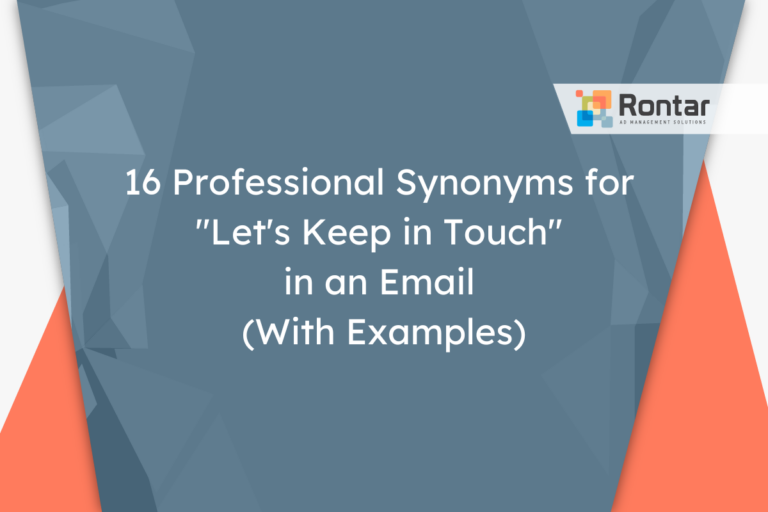Why Acknowledging Emails Matters in the Workplace
In the fast-paced world of business, acknowledging emails swiftly and professionally is crucial. It's a fundamental aspect of effective communication, signaling that you've received the message and are addressing it.
This guide provides 14 distinct phrases, each tailored to different professional scenarios, complete with usage guidelines and practical email examples to ensure clarity and impact.
1. Thank you for your email
This phrase is a cornerstone of polite and formal email acknowledgments, perfectly suited for interactions with clients, senior colleagues, or any professional contact.
It shows appreciation for the sender's message and demonstrates that their email is being taken seriously.
Best Used For: Client communication, initial responses to important inquiries. Example: 'Thank you for your email, I will review the document and get back to you by the end of the day.'
2. I have received your email
Formal and straightforward, this phrase confirms receipt of the email without immediate action or a detailed response. It's ideal when an acknowledgment is necessary, but a comprehensive reply will follow.
This assures the sender that their message has been noted.
Best Used For: Internal communications needing a quick confirmation. Example: 'I have received your email and will provide feedback by tomorrow.'
3. Thank you
A versatile acknowledgment, suitable for both formal and informal settings. It's excellent for brief replies where gratitude is the primary focus.
Effective with familiar colleagues or in less formal corporate environments, demonstrating appreciation without being overly verbose.
Best Used For: Quick acknowledgments to colleagues. Example: 'Thank you for the update.'
4. I’ll take a look, thanks
This phrase strikes a balance between informality and politeness, perfect for colleagues or environments that encourage a friendly tone.
It acknowledges the email and indicates that the request or information will be reviewed soon.
Best Used For: Requests or information requiring a follow-up. Example: 'I’ll take a look, thanks for sending this over.'
5. Noted
A concise and somewhat informal acknowledgment, best suited for team interactions or casual colleague communications.
Use with discretion, as brevity can be perceived as dismissive if the relationship is not well-established.
Best Used For: Brief internal team communications. Example: 'Noted. I'll integrate these changes.'
6. Understood
Primarily used in informal settings, conveying clear acknowledgment of the email’s content without excessive formality.
Suitable for quick exchanges within teams or responding to instructions.
Best Used For: Confirming understanding of instructions. Example: 'Understood. I will proceed as instructed.'
7. Received
A very informal acknowledgment reserved for brevity-focused communications where relationships permit such succinctness.
Effectively used internally or when quick, informal updates are exchanged; avoid in formal correspondence.
Best Used For: Quick confirmations within a team. Example: 'Received. Thanks!'
8. Your email was well received
A formal, detailed phrase suitable for professional settings where a thorough acknowledgment is desired.
Useful with new clients or partners to establish rapport, adding a touch of politeness.
Best Used For: Interactions with new clients or partners. Example: 'Your email was well received; we look forward to collaborating.'
“Effective email communication is not just about sending messages; it's also about acknowledging them professionally.
Expert Email Communicator
Enhance Your Email Game
Interactive tools to improve your communication.
Email Template Generator
Create professional email templates effortlessly.
Tone Analyzer
Check and adjust the tone of your email with ease.
9. Email received
Straightforward and slightly less formal than the previous option, striking a good balance between acknowledgment and formality.
Versatile for various situations, from internal communications to client emails.
Best Used For: Confirming receipt in various professional settings. Example: 'Email received; we will review it shortly.'
10. Well received
Polite and formal, suitable for interactions needing more formality, like with new clients or senior management.
Suggests value for the information shared.
Best Used For: Formal acknowledgments to external contacts. Example: 'Well received; we appreciate the detailed explanation.'
11. Got it
Informal, best used with comfortable colleagues, perfect for quick replies within teams.
Ensure informality doesn't misinterpret professionalism or disinterest.
Best Used For: Casual team communication. Example: 'Got it; will keep you updated.'
12. Acknowledged
A formal and informal tone, adaptable to a variety of situations. It is short and suggests content was noted.
Suitable for peer communications and upward reporting, particularly in technical or task-based threads.
Best Used For: Reporting updates and task completion. Example: 'Acknowledged; the changes have been implemented.'
13. Copy that
Casual, conversational, mainly used in quick exchanges within team environments.
Communicates clear understanding, best avoided in formal communications.
Best Used For: Quick team interactions. Example: 'Copy that; will follow up with the client.'
14. Well noted
Formal, conveying the importance given to the message. Appropriate for detailed follow-ups or dealing with external or senior contacts.
Indicates that the email content has been received with the necessary attention.
Best Used For: Communications that require a detailed follow-up. Example: 'Well noted; we will address your concerns in our next meeting.'
Final Thoughts: Mastering Email Acknowledgment
Choosing the right acknowledgment phrase significantly impacts your communication. Matching the tone to the situation and the recipient is key.
Use these 14 options as a guide to ensure your email responses are always appropriate and professional. Adapt these examples to fit your specific needs and corporate culture.